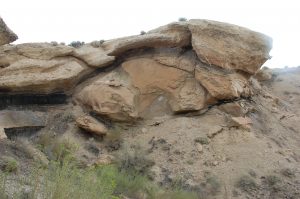 Stratigraphic sequences provide a useful framework within which reconstructions of past paleoenvironmental changes can be made. This is partly because such reconstructions help in the assessment of sedimentary hiatuses and evaluations of the completeness of stratigraphic successions, but also because sea level change acts as a master variable for a wide range of depositional and biogeochemical processes.
Stratigraphic sequences provide a useful framework within which reconstructions of past paleoenvironmental changes can be made. This is partly because such reconstructions help in the assessment of sedimentary hiatuses and evaluations of the completeness of stratigraphic successions, but also because sea level change acts as a master variable for a wide range of depositional and biogeochemical processes.
A significant portion of my research effort has been directed at understanding the nature of, and controls on stratigraphic sequences. I have contributed to the body of work concerning sea level history in the Western Interior basin through studies of Cenomanian-Turonian organic carbon- and skeletal-rich deposits in proximal and distal settings (e.g., Sageman, 1996; Fig. 4 ), as well as to studies of the coeval Cenomanian-Turonian shorelines (Elder et al., 1994; Laurin and Sageman, 2001). I contributed my reconstruction of Cenomanian-Turonian relative sea level change to a paper co-authored with my former post-doc advisor, Mike Arthur (Arthur and Sageman, 2005; Fig. 8) and I have continued to work on this reconstruction, most recently employing high resolution geochemical data to identify hiatuses and correlate sequences.
A collaborative study of the Permian Brushy Canyon Formation in West Texas was essentially a test of the condensed section paradigm in a slope and basin floor fan environment. We used trends in organic carbon richness to help quantify a stratigraphic hierarchy for the deep water depositional system that my colleague Mike Gardner and his team had been working on (see Sageman et al., 1996). Similarly, as part of a collaborative study of the black shales of the Devonian Appalachian basin, I worked with Chuck Ver Straeten and Carlton Brett on the integration of petrologic, mineralogic, and geochemical data to refine sequence stratigraphic interpretations of the Givetian – Frasnian interval in west-central New York.
Recent work on the stratigraphic architecture of Cretaceous deposits of the Western Interior basin has focused on a my on-going collaboration with colleagues from the Czech Academy of Sciences. Jiri Laurin was awarded a Fulbright Scholarship to work with me on a study of the Dakota Formation in SW Utah in 2000, building on David’s Ulicny’s (his PhD. advisor) earlier work in Utah; Jiri’s study of the Cenomanian-Turonian (C-T) paralic section was a significant part of his Ph.D. thesis from the Charles University. I have continued to collaborate with these excellent Czech sedimentologists, most recently working with David on using d13C records to assist in global correlation of C-T stratigraphic sequences.